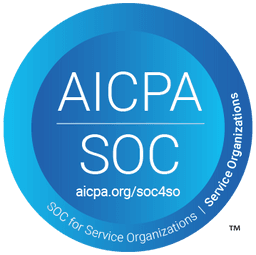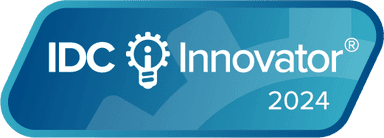Pay-as-you-go SaaS pricing guide
This guide explores the pay-as-you-go (PAYG) pricing model in SaaS, covering its variations, benefits, and challenges, and showcases how to implement it seamlessly within the m3ter system.
In this guide
Contributors
What is the Pay-As-You-Go pricing model?
The pay-as-you-go (PAYG) pricing model in SaaS charges customers based on their consumption of the service.
PAYG is often conflated with usage-based pricing (UBP), as there’s a big misconception that UBP must be PAYG. However, usage-based subscriptions, are very common especially in sales-led B2B. PAYG is often best used when selling via self-service, to smaller companies, or for vendors who want customers to start small and scale as they grow their usage.
This is illustrated in research from OpenView Partners and Kyle Poyar (right). The largely usage-based or PAYG model – while less common than usage-based subscriptions or non-UBP models like per-seat pricing – is still popular and increases in traction as the target customer gets larger.
Types of pay-as-you-go pricing
Consumption-based PAYG (pay after)
With a consumption-based PAYG model, customers use a certain resource (e.g. storage, transactions, API calls, etc.) and are billed for that consumption after the fact. The more they use, the more they pay.
Credit-based PAYG (pay before)
In a credit-based PAYG model, customers still pay for consumption, but they prepay for a certain amount of usage by buying credits. These credits translate to a specified amount of the product or service, and each vendor is different in terms of the “exchange rate” (i.e. how much each credit costs in fiat currency). If the customer runs out of prepaid credits, there is usually a system in place to purchase additional credits for the time period.
Hybrid PAYG
Not every pricing model fits exclusively in one bucket; hybrid models, which combine elements of multiple pricing models, are becoming more common.
With a hybrid PAYG model, often called usage-based subscriptions, companies offer some mix of the pre- and post-paid options above. For instance, they may offer options for consumption-based billing where the customer pays for what they’ve already used, but with the addition of credit-based plans (i.e. prepaid) to accommodate different use cases and encourage higher spend.
Implementing PAYG pricing with m3ter
Advantages and disadvantages of pay-as-you-go models
Advantages of PAYG
Whether you call it PAYG or usage-based pricing, there are many reasons why this pricing strategy is growing in popularity across SaaS and other industries. Some of the advantages of PAYG include:
1) Easier adoption
Lower upfront costs and reduced barriers make it simpler for potential customers to try out and adopt a service, without the mental load and need to estimate capacity. Easier adoption encourages experimentation and can expand your market reach. Nearly half of SaaS companies using usage-based pricing say it has helped them with customer acquisition.
2) Customer satisfaction
With PAYG pricing, customers feel their costs are better aligned with the value they receive, as they pay based on actual usage. This reduces concerns about wasteful spending or unused features and allows them to flex spending up or down based on current needs.
3) Costless upsell
Usage-based pricing supports efficient product-led growth (PLG), enabling revenue growth without extra Sales effort. Sales teams can focus on securing new commitments, accelerating adoption, and pursuing new business opportunities instead of manual upsell tasks.
4) Margin control
For SaaS companies with significant usage-driven costs, a PAYG model provides tighter margin control. When the right pricing metric is chosen, it links revenue and costs to consumption, creating more consistent unit economics per customer.
5) Decreased logo churn
PAYG enables customers to reduce usage and spending as needed during tough times, reducing the likelihood of logo churn. While this may lead to a sharp decrease in revenue for the business during a downturn, it’s much worse to churn customers than see revenue shrinkage from the installed base. The flexibility from PAYG helps the business retain customers and potentially recover more quickly as conditions improve.
6) Increased NRR
As a result of all these advantages, PAYG models typically lead to higher Net Revenue Retention (NRR) – the most important metric for software businesses. The significance of this impact cannot be overstated, and it’s a key metric to measure how successful the PAYG strategy is for a company.
Disadvantages of PAYG
As with any pricing model, there are challenges to consider in advance in order to mitigate issues before they arise.
1) Predictability
PAYG can present predictability challenges for both customers and vendors. Some customers may be uncomfortable with the uncertainty of the pricing model, while others might be fine with it but get angry if they end up with a billing surprise due to usage spikes or poor forecasting. Vendors may experience revenue unpredictability and challenges with cash flow, due to PAYG’s dependence on variable usage.
How to mitigate: To alleviate the customer’s predictability concerns, consider any of the following: 1) hybrid models combining subscriptions with allowances and overage rates; 2) options to ignore infrequent spikes in usage; or 3) offer discounted rates in exchange for commitments.
To a certain extent, the vendor can also alleviate their revenue unpredictability and cash flow concerns by exchanging discounts for commitments.
2) Lack of clean data
PAYG models require businesses to incorporate two buckets of data: 1) usage data based on the platform and 2) commercial data such as accounts, products, pricing, plans, and deals from the CRM or CPQ. The key challenge is not only accurately calculating bills for each customer at the end of the month, but also showing near-real-time running totals that are accurate to the hour (or less).
How to mitigate: Automate billing operations with a solution that connects the customer, finance stack, and the platform and pricing systems, easing the burden on Finance teams and ensuring scalable, automated, efficient BillingOps.
3) Surviving a downturn
PAYG models are more vulnerable to shrinking accounts during economic downturns, leading to reduced usage (and therefore revenue) even if logo churn is low.
How to mitigate: Taking into account how long the downturn is forecasted to last, strategically prioritize what’s most important during the period. If that’s minimizing logo churn, there are a number of ways to put PAYG to work for this goal. If maintaining usage levels is most important, focus on driving product adoption, ensuring customer satisfaction, and investing in product improvements to add value.
4) Sales compensation
The question of Sales comp when moving toward a PAYG model is tricky. Friction is especially likely when a business charges customers by usage but keeps Sales incentives focused on maximizing upfront commitments.
How to mitigate: This is an ongoing hot topic in the industry, so the ambiguous answer is that (unfortunately) it depends. Every business that is currently using or moving toward a PAYG model will need to open up these conversations. (Sales comp would be a great challenge to have your pricing committee work through.)

Download Pay-as-you-go SaaS pricing guide
Download this guide to keep a copy or share with colleagues.
DownloadSubscribe to Counting Tokens
Actionable insights on AI revenue, billing, and finance.
Ready to upgrade your monetization stack?
See a demo, get answers to your questions, and learn our best practices.
Schedule a demo


